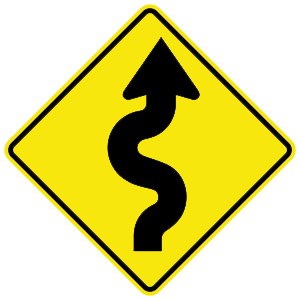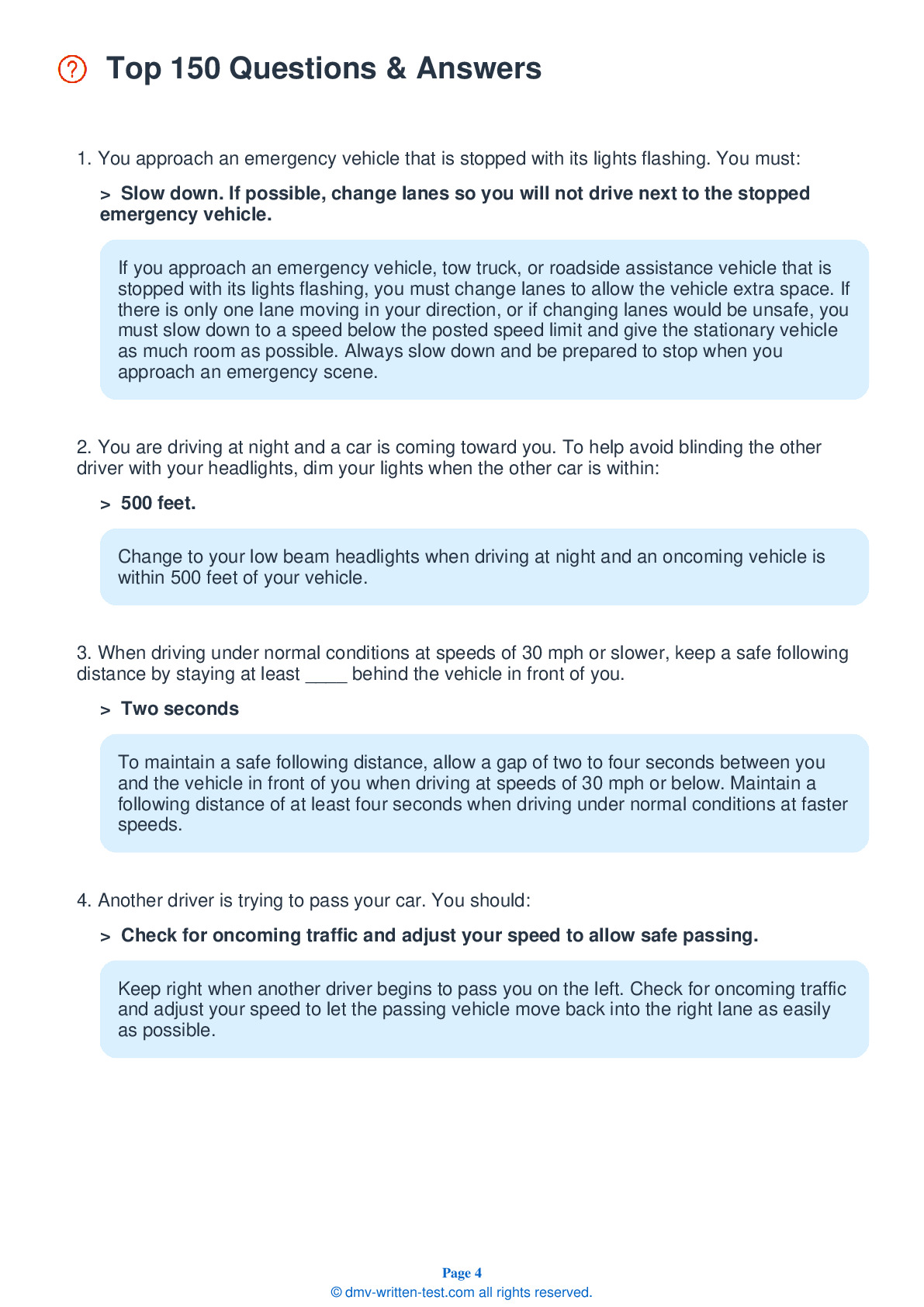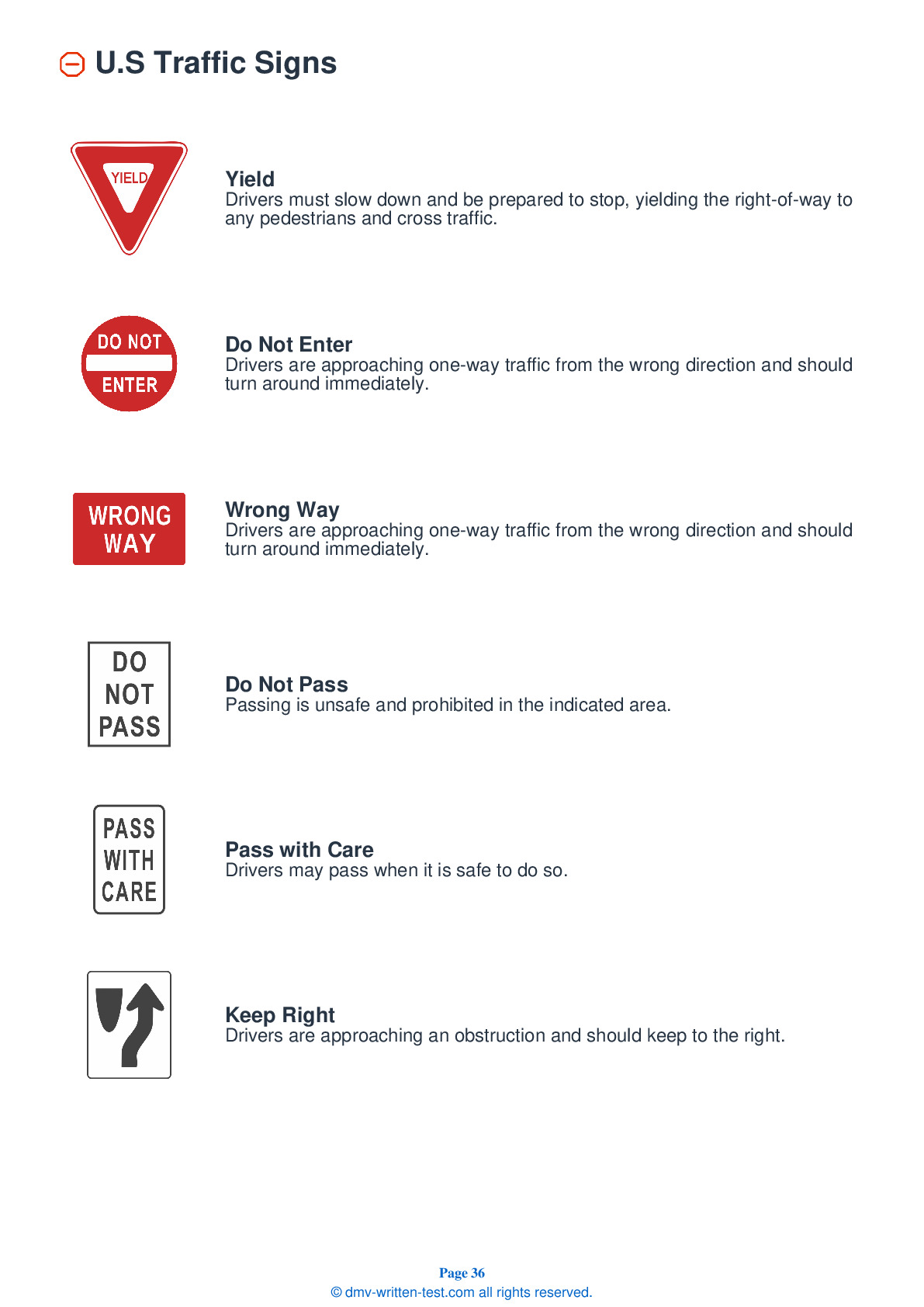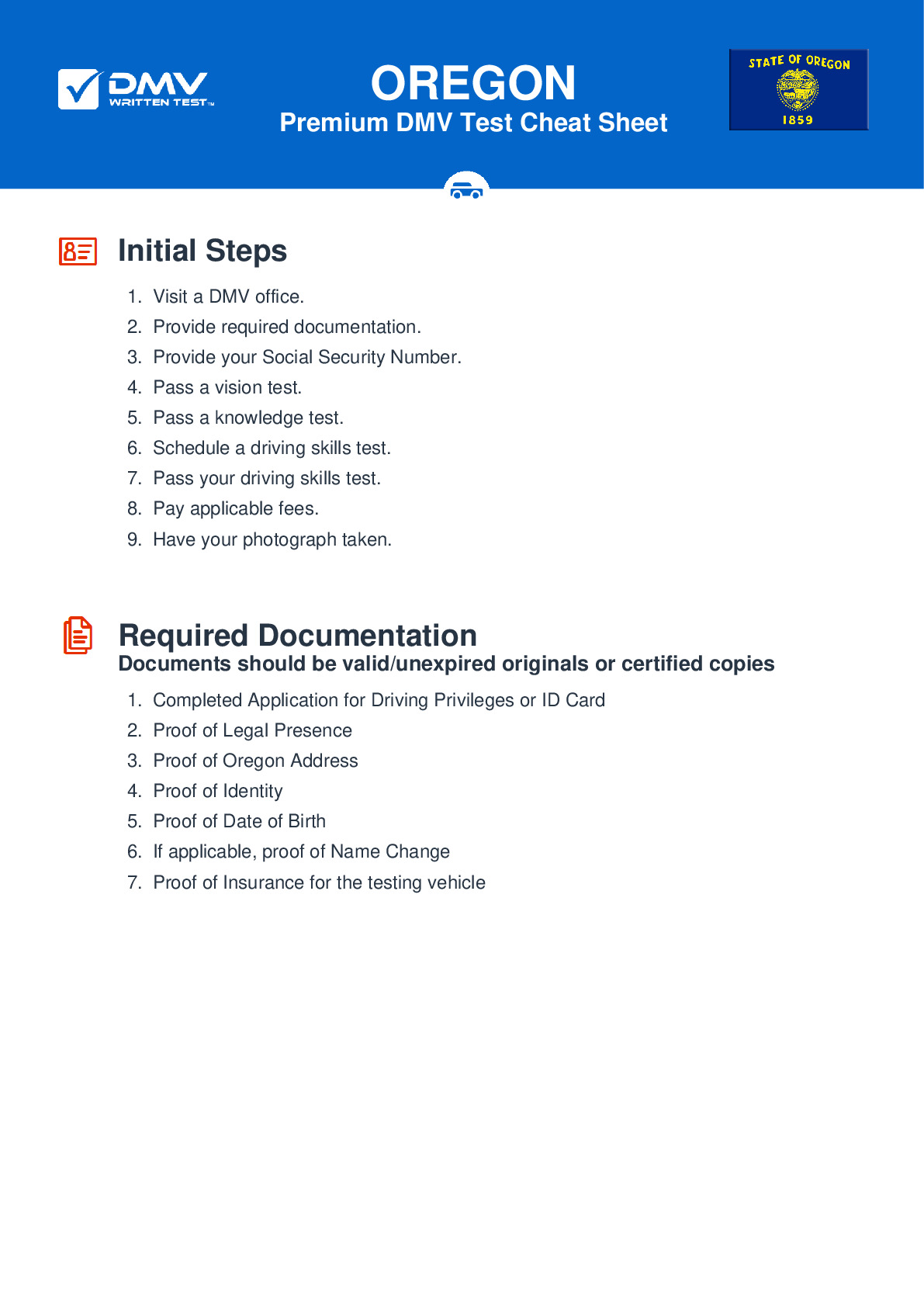2025 Oregon Permit Test 16
The following questions are from real DMV written tests. These are some of the actual permit questions you will face in Oregon. Each permit practice test question has three answer choices. Select one answer for each question and select "grade this section." You can find this button at the bottom of the drivers license quiz. For a complete list of questions and answers for Oregon please visit https://cheat-sheets.dmv-written-test.com/en/oregon/car.
Number of Tests
Number of Question
Passing Score
1. To check your blind spot when changing lanes to the left, you should glance:
Explanation
To check your blind spot, glance over your shoulder in the direction that you want to move.
2. This road sign means:

Explanation
This sign indicates that the road ahead winds with a series of turns or curves.
3. While driving, you come upon a sign displaying the words “Reduced speed, 35 mph." This means:
Explanation
"Reduced speed" signs inform drivers that they must reduce their speeds. If a new speed limit is posted on one of these signs, the new speed limit begins at the sign.
4. When approaching a steady green traffic light, drivers should:
Explanation
When approaching an intersection with a steady green traffic light, yield to pedestrians in the crosswalk and vehicles still in the intersection. You may continue driving, but should approach the intersection at a speed that will allow you to slow down and stop if the light changes before you get there.
5. Signs that are colored orange are:
Explanation
Highway work zones are established according to the type of work underway along the roadway. Signs in work areas are typically diamond-shaped, orange, have black letters or symbols, and serve as a warning that people are working on or near the highway.
6. Emergency vehicles:
Explanation
You must yield the right-of-way to police cars, fire engines, ambulances, or any other emergency vehicles using a siren or air horn and a red or blue flashing light. Follow any instructions given over the emergency vehicles' loudspeakers. Emergency vehicles often follow each other so you should proceed only when you are certain the way is clear.
7. What may help drivers conserve gasoline?
Explanation




